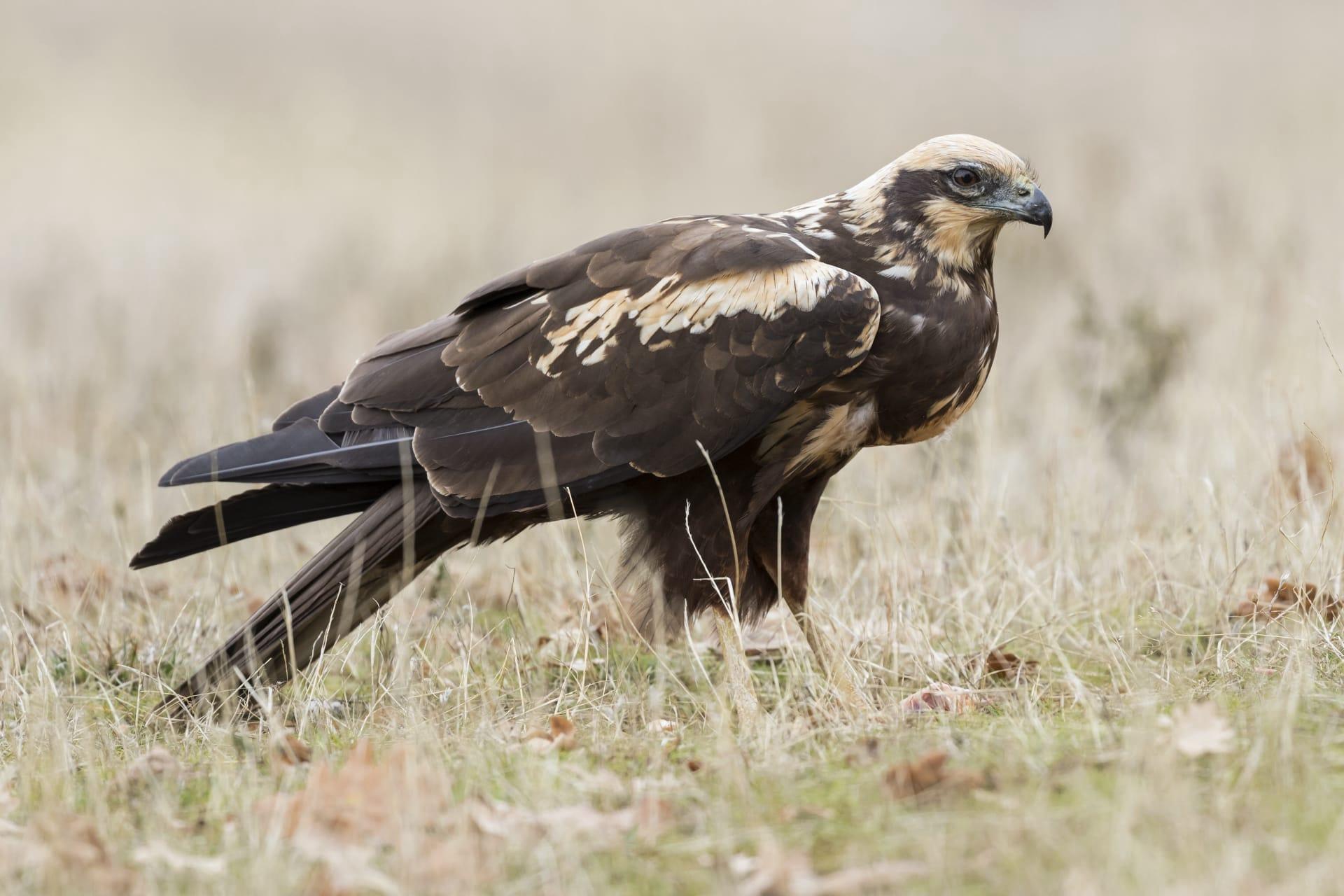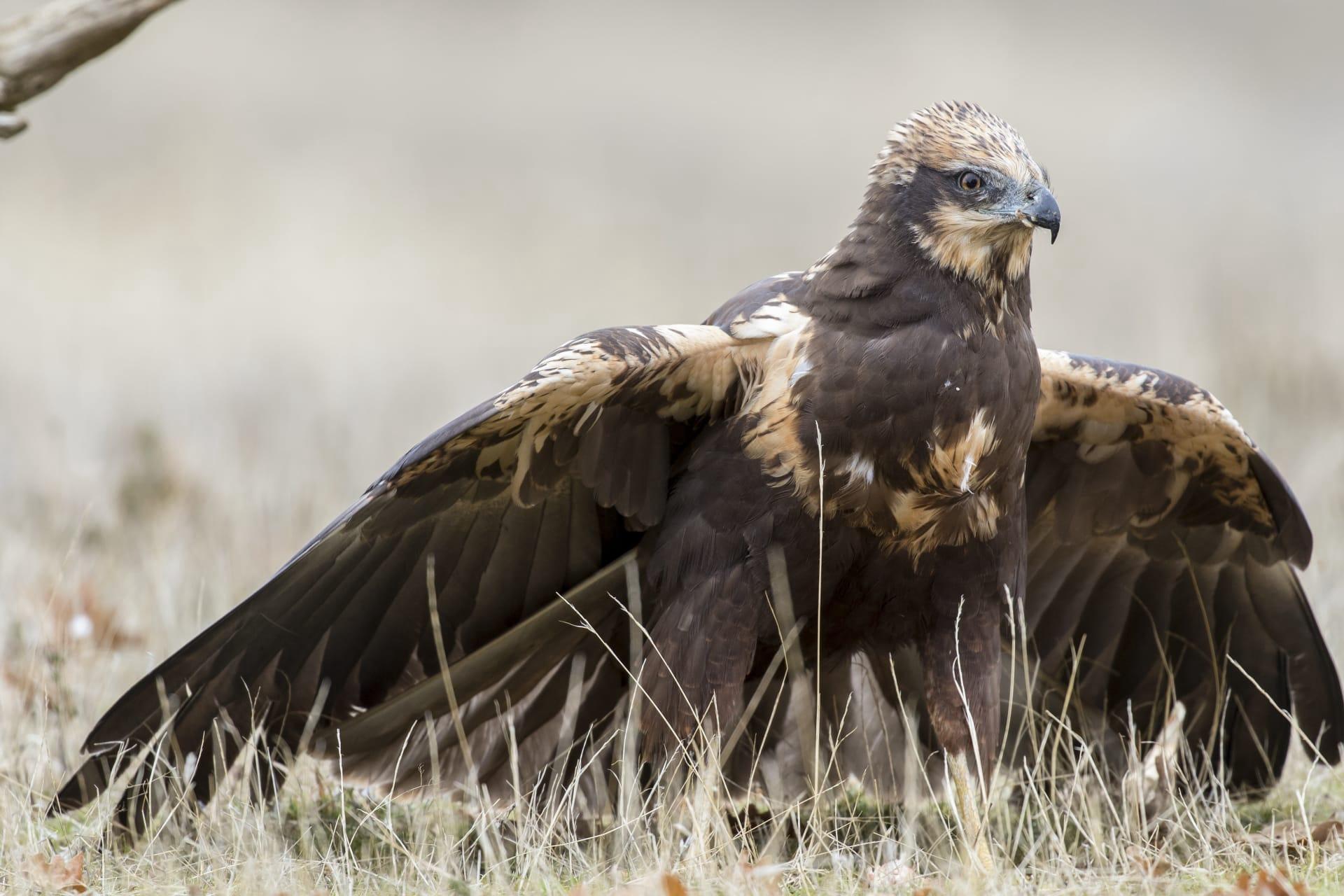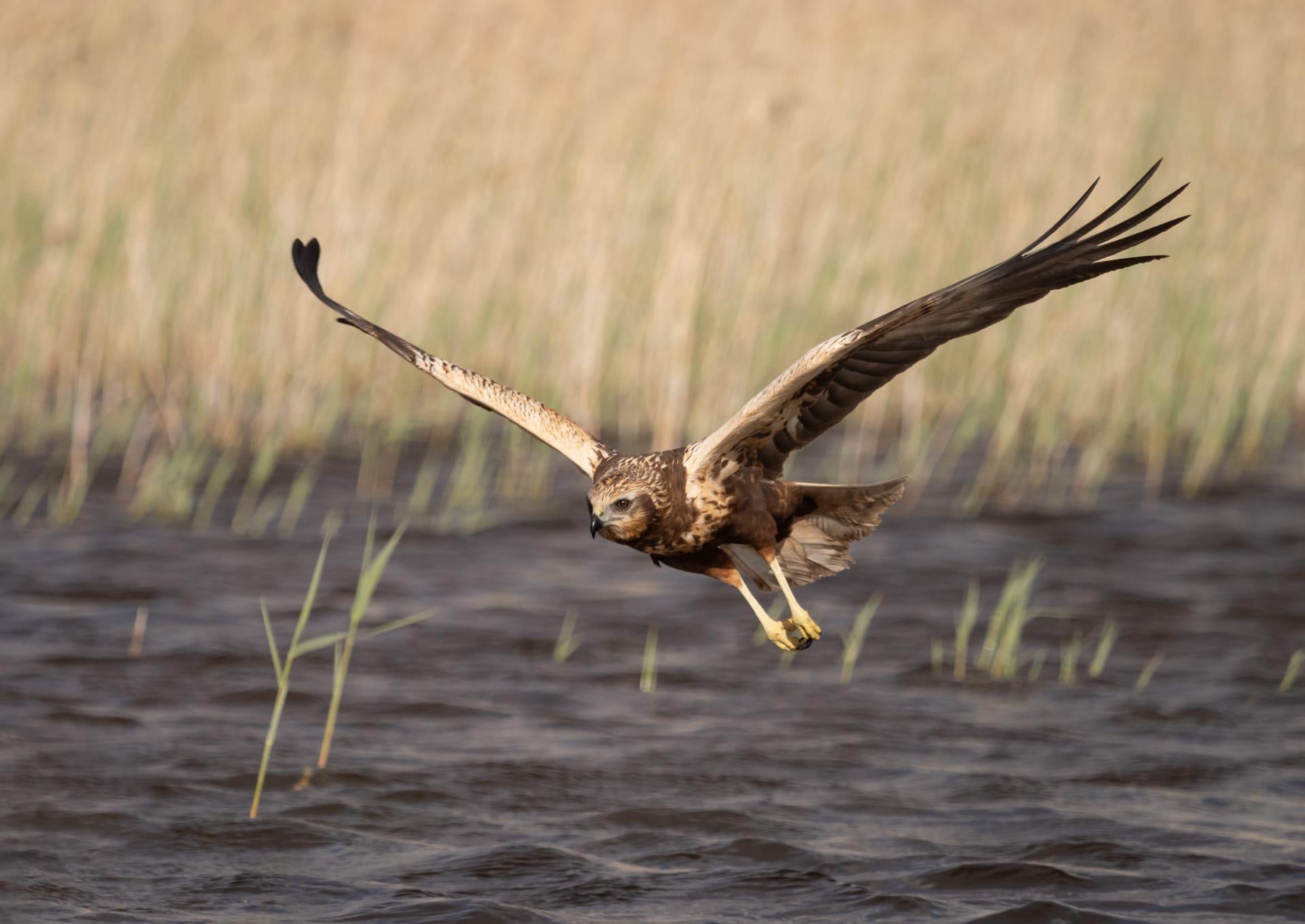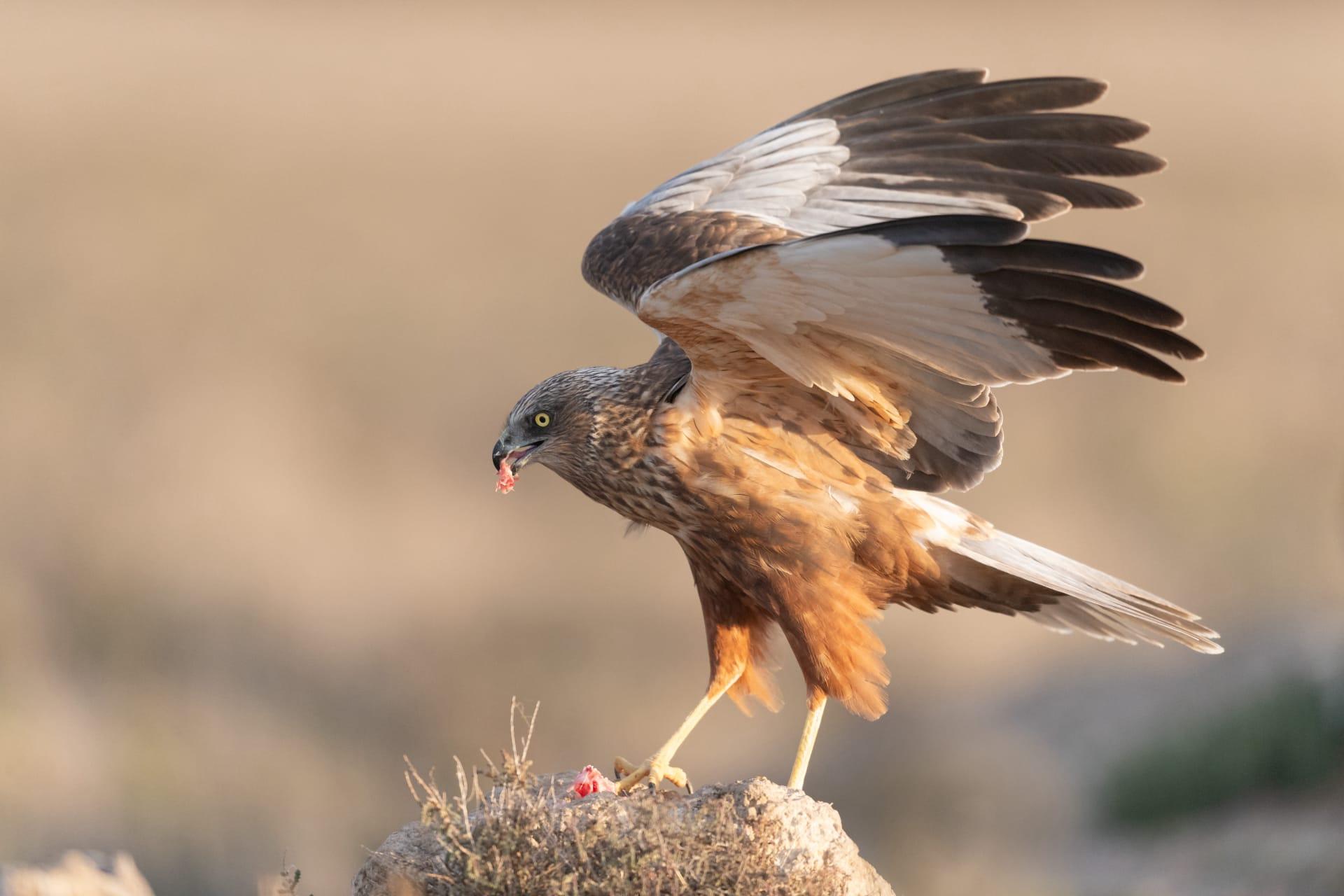1
Harriers are a group of hawks known for their unique hunting method. Unlike other birds of prey that swoop down on their prey, harriers hunt by flying low over the ground, relying on their acute hearing as well as their vision to detect small animals hiding in the vegetation. This technique allows them to hunt in areas where visual hunting would be less effective, such as in tall grass or dense shrubbery. Their disk-shaped face, similar to that of an owl, helps direct sound to their ears, enhancing their ability to locate prey by sound as well as sight.
Another fascinating fact about harriers is their sexual dimorphism, which is quite pronounced. Male and female harriers differ significantly in size and coloration. Generally, males are smaller, about 30% lighter than females, and have distinct gray plumage, while females are larger, with a heavier build and brown plumage. This difference is not just aesthetic; it also reflects their different roles in hunting and nesting. The male's lighter build makes him more agile, suitable for catching smaller, nimble prey, while the female's larger size enables her to take down bigger prey and offer better protection for their young.

2
Harriers have a remarkable ability to adapt to different habitats. They are found in various environments around the world, from European farmlands to Asian wetlands, and from African savannas to North American grasslands. This adaptability is key to their survival, as it allows them to exploit a wide range of prey and nesting sites. Despite this, habitat loss and changes in agricultural practices pose significant threats to harrier populations in many parts of the world.
The Northern Harrier, specifically, has a unique feature among North American raptors: a white rump patch that is visible during flight. This patch makes them easily identifiable even from a distance. It's not just a distinctive mark; it also plays a role in social signaling among Northern Harriers. The visibility of the white rump patch during their characteristic low flight helps other harriers recognize and communicate with each other across large open areas where these birds hunt and live.

3
Harriers are known for their unusual nesting habits. Unlike many birds of prey that nest in trees, most harrier species build their nests on the ground. This ground-nesting behavior makes their nests less visible and protects them from certain predators, but it also makes them more vulnerable to others, like foxes and humans. The nests are usually built in dense vegetation to offer some level of concealment and protection.
Interestingly, harriers are one of the few raptor species that practice polygyny, where one male mates with several females. In some cases, a male harrier may have up to five females in his territory. Each female builds her own nest, and the male provides food for all of them and their offspring. This mating system is quite rare among birds of prey and highlights the unique social structure of harriers.

4
Harriers play a crucial role in ecosystem balance. As predators, they help control populations of rodents and insects, thereby maintaining a healthy balance in their habitats. Their presence in an ecosystem is often an indicator of the health of that ecosystem. A decline in harrier populations can signal an imbalance, often due to habitat loss or pesticide use that affects their prey.
One of the most astonishing aspects of harriers is their flight agility. They are known for their exceptional maneuverability, especially when hunting. Harriers can make sharp turns and sudden dives, which is essential for capturing agile prey like small mammals and birds. This agility is also displayed in their courtship displays, where males perform impressive aerobatic stunts to attract females.

5
Harriers have a unique plumage change as they age. Young harriers typically have a different coloration compared to adults, which helps in reducing aggression from adult birds. For instance, juvenile Northern Harriers are brown, which changes to the distinct gray or brown plumage in adulthood. This plumage change is crucial for their survival, as it reduces conflicts during their vulnerable juvenile stage.
The diet of harriers is quite varied and includes a range of small animals. They primarily feed on small mammals like voles and mice, but they also hunt birds, amphibians, and insects. Their diet can vary significantly based on their habitat and the availability of prey. This dietary flexibility is a key factor in the harriers' ability to adapt to different environments and contributes to their wide distribution across various geographic regions.